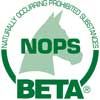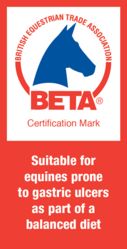The Back of the Bag; For Your Information
For your information!
The information printed on the feed bag is there to help you, the horse owner and customer, make an informed choice about which product is most suitable for your horse. Some details must be there by law the rest are there at the discretion of the manufacturer but usually include some idea of which type of horse the contents are suitable for and how they should be fed.
Statutory Statement
This statemet will include:
- The name of the feed – should indicate what type of horse the feed is intended for.
- A description of the feed - ie. whether it is to be fed as a “complete” feed (nothing else is required) or as a “complementary” compound feedstuff (designed to be fed alongside forage but as the sole concentrate source). The manufacturer also has to state which species the feed is intended for.
- Analytical Constituents (Nutrient Analysis) - by law manufacturers only have to declare Crude Protein, Crude Fibre, Oil, Ash, Copper and Vitamins A, D and E. Some manufacturers will put more information on the bag, particularly if the nutrient levels are good and worth shouting about!
- Crude Protein - does not distinguish between essential and non-essential amino acids ie. quality of the protein content. Manufacturers who have taken care to ensure essential amino acids are included will often mention these by name eg. lysine and methionine.
- Ash – often perceived to be the rubbish, useless part of the feed. In fact, the ash figure represents all the inorganic minerals in the feed, such as calcium and magnesium, so is very important.
- Composition (Ingredients) - Listed in order of inclusion with the greatest first. Ingredients are the various feed materials used to make up the feed and should not be confused with nutrients. If the ingredient list is printed on the bag rather than as a stitched on label it is a good indication that the manufacturer sticks to a consistent set of ingredients and doesn’t just use what is cheapest at the time.
- Bag Weight - This is important when used alongside feeding rates for determining value for money.
- Best before date and batch number or date of manufacture – if there is a problem with the feed then this information is vital if you need to contact the manufacturer. Tear this information off or keep the bag until you have used all the feed.
- Name & Address of Manufacturer – Each manufacturer also has an “establishment number” which pin points the exact site of manufacture.
Look out for:
Digestible Energy (DE MJ/kg) - quoted as an “estimated” value, this remains an optional piece of information but is extremely useful as a guide to the level of energy the feed is likely to give.
Cereals that have been cooked – micronisation and extrusion are the most efficient cooking techniques which improve the digestibility of the starch in the cereals, helping to avoid problems such as colic, laminitis and over excitability.
Chelated minerals – minerals are attached to other molecules to improve their bio-availability. This information may not be listed in the ingredient list but will be elsewhere on the bag.
Antioxidants, preservatives and colourings – these have to be listed. Antioxidants can be of two types, those that protect the food and stop it from moulding and those that are included for potential health benefits to the horse.
Feeding Rates - the amount of feed you should give your horse will be given on the bag. These will be given according to bodyweight and workload and, contrary to popular belief, are not over inflated to make you feed more than you need!!
Starch and sugar levels - quoting these is not compulsory but many feeds now carry this information to help customers whose horses need a low starch diet, for example if those prone to laminitis, gastric ulcers or tying-up.
 The BETA logo indicates that the manufacture is a member of the British Equestrian Trade Association and, as such, should be trusted to produce good quality products and trade fairly. The BETA NOPS logo indicates that the manufacturer abides by a manufacturing code to minimise the risk of Naturally Occurring Prohibited Substances getting into the feed. This is particularly important for horses competing in FEI competitions and under the rules of racing. Feeds accredited by BETA as being recommended for horses prone to gastric ulcers carry a different logo and are designed to meet set criteria with regards to dietary starch levels and feeding rates.
The BETA logo indicates that the manufacture is a member of the British Equestrian Trade Association and, as such, should be trusted to produce good quality products and trade fairly. The BETA NOPS logo indicates that the manufacturer abides by a manufacturing code to minimise the risk of Naturally Occurring Prohibited Substances getting into the feed. This is particularly important for horses competing in FEI competitions and under the rules of racing. Feeds accredited by BETA as being recommended for horses prone to gastric ulcers carry a different logo and are designed to meet set criteria with regards to dietary starch levels and feeding rates.



